Articles
- Page Path
- HOME > J Korean Acad Nurs > Volume 40(1); 2010 > Article
-
Original Article
- Development of Key Indicators for Nurses Performance Evaluation and Estimation of Their Weights for Management by Objectives
- Eun Hwa Lee, Sung Hee Ahn
-
Journal of Korean Academy of Nursing 2010;40(1):69-77.
DOI: https://doi.org/10.4040/jkan.2010.40.1.69
Published online: February 28, 2010
1Nursing Team Leader, Nursing Department, St. Mary's Hospital, The Catholic University of Korea, Seoul, Korea.
2Professor, College of Nursing, The Catholic University of Korea, Seoul, Korea.
- Address reprint requests to: Ahn, Sung Hee. College of Nursing, The Catholic University of Korea, 505 Banpo-dong, Seocho-gu, Seoul 137-701, Korea. Tel: 82-2-2258-7409, Fax: 82-2-2258-7772, shahn@catholic.ac.kr
Copyright © 2010 Korean Society of Nursing Science
Abstract
-
Purpose
- This methodological research was designed to develop performance evaluation key indicators (PEKIs) for management by objectives (MBO) and to estimate their weights for hospital nurses.
-
Methods
- The PEKIs were developed by selecting preliminary indicators from a literature review, examining content validity and identifying their level of importance. Data were collected from November 14, 2007 to February 18, 2008. Data set for importance of indicators was obtained from 464 nurses and weights of PEKIs domain was from 453 nurses, who worked for at least 2 yr in one of three hospitals. Data were analyzed using χ2-test, factor analysis, and the Analytical Hierarchy Process.
-
Results
- Based upon Content Validity Index of .8 or above, 61 indicators were selected from the 100 preliminary indicators. Finally, 40 PEKIs were developed from the 61 indicators, and categorized into 10 domains. The highest weight of the 10 domains was customer satisfaction, which was followed by patient education, direct nursing care, profit increase, safety management, improvement of nursing quality, completeness of nursing records, enhancing competence of nurses, indirect nursing care, and cost reduction, in that order.
-
Conclusion
- PEKIs and their weights can be utilized for impartial evaluation and MBO for hospital nurses. Further research to verify PEKIs would lead to successful implementation of MBO.
- 1. Cronin SN, Becherer CD. Recognition of staff nurse job performance and achievement. Journal of Nursing Administration. 1999;29:26–31.
- 2. Curtright JW, Stolp-Smith SC, Edell ES. Strategic performance management: Development of a performance measurement system at the mayo clinic. Journal of Healthcare Management. 2000;45:58–68.ArticlePubMed
- 3. Fain JA, Sheathelm HH. Management by objectives: As applied to nursing service. Nursing Forum. 1984;21:68–71.PubMed
- 4. Hyun CK. The effect of the discrepancy between perceived importance and usage of BSC on the perception of fairness of performance appraisal. 2003;Busan, Kyungsung University. Unpublished doctoral dissertation.
- 5. Jang KS, Kim YM, Kim NY, Chung KH. An analysis on the contents and the trend of research of performance appraisal in Korea. Journal of Korean Academy of Nursing Administration. 2005;11:89–104.
- 6. Jang KS, Lee SY, Kim YM, Hwag SY, Kim NY, Ryu SA, et al. Development of clinical performance indicators for establishing a connecting system between hospital performance management and quality improvement. Journal of Korean Academy of Nursing. 2005;35:1238–1247.ArticlePubMedPDF
- 7. Jang RH. The decision making supporting system to set efficient weights in making a decision using AHP. 2003;Seoul, Sungkyunkwan University. Unpublished master's thesis.
- 8. Kang KH. Development of the balanced scorecard (BSC) for the hospital nursing unit. 2003;Seoul, Yonsei University. Unpublished doctoral dissertation.
- 9. Kang KH, Kim IS. Development of performance measure indicators in hospital nursing units. Journal of Korean Academy of Nursing. 2005;35:451–460.ArticlePubMedPDF
- 10. Kaplan RS, Norton DP. The balanced scorecard measures that drive performance. Harvard Business Review. 1992;70:71–79.PubMed
- 11. Kim EJ. Development of the business performance measurement indicators based on non-profit organization balanced scorecard (BSC) for self-operated school foodservice operations. 2005;Seoul, Yonsei University. Unpublished master's thesis.
- 12. Kim IS, Lee HJ, Kang KH, Jang SJ. A survey for performance measurement indicators of nursing organizations in hospital. Journal of Korean Academy of Nursing Administration. 2005;11:385–399.
- 13. Kim YS. Development of performance measurement indicators for nursing on delivery units. 2006;Seoul, Yonsei University. Unpublished master's thesis.
- 14. Lee JA. A study on the performance measurement and compensation management of multinational companies in Korea. 2000;Seoul, Sungkyunkwan University. Unpublished master's thesis.
- 15. Lee JC. A study on the operation and effectiveness of management by objectives (MBO) system. 2003;Seoul, Sungshin Women's University. Unpublished master's thesis.
- 16. Lee JY. An empirical study on the effect on the characteristics of goal setting theory on efficiency of MBO: Focusing on mediating role of reliability on estimation and compensation. 2007;Seoul, Hanyang University. Unpublished master's thesis.
- 17. Lee YA. Development of peer evaluation tool for operating room nurse. 2003;Seoul, Yonsei University. Unpublished master's thesis.
- 18. Lee YS. Development of nursing performance appraisal tool using management by objectives. 2002;Seoul, Seoul National University. Unpublished doctoral dissertation.
- 19. Nauta A, Sanders K. Causes and consequences of perceived goal differences between department within manufacturing organizations. Journal of Occupational and Organizational Psychology. 2001;74:321–342.
- 20. Park SH. Development of the criteria of performance evaluation for hematopoietic stem cell transplantation unit. 2004;Seoul, Seoul National University. Unpublished master's thesis.
- 21. While AE. Competence versus performance: Which is more important. Journal of Advanced Nursing. 1994;20:525–531.ArticlePubMed
- 22. Yoo JI. Development of a performance measurement system for the perioperative nursing unit using the balanced scorecard (BSC). 2001;Seoul, Yonsei University. Unpublished master's thesis.
REFERENCES
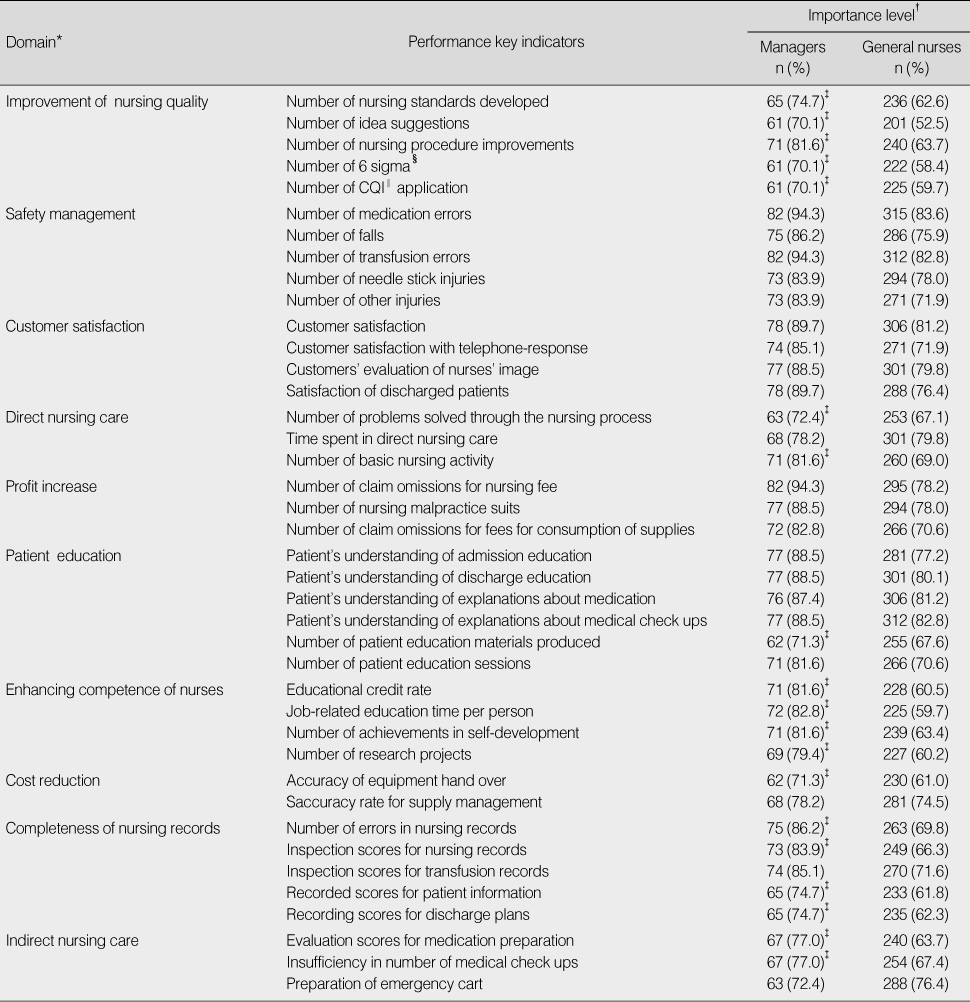
*Final performance evaluation indicators domain; †Number of participants with importance score 4, 5; ‡More than 70% importance rate by managers, less than 70% by general nurses; §Six Sigma simply means a measure of quality that strives for near perfection. And It is a disciplined, data-driven approach and methodology for eliminating defects. ∥Continuous quality improvement.
Figure & Data
REFERENCES
Citations

- Augmenting Walkability, Visibility and Arrangement for Korean ICU
Javaria Manzoor Shaikh
Sir Syed University Research Journal of Engineering & Technology.2015; 5(1): 20. CrossRef - Psychometric Properties of the Persian Version of Self-Management Scale for a Sample of Iranian Patients With Epilepsy
Nahid Dehghan Nayeri, Mansooreh Aliasgharpour, Mohammad Ali Yadegari
Nursing and Midwifery Studies.2013; 1(4): 210. CrossRef
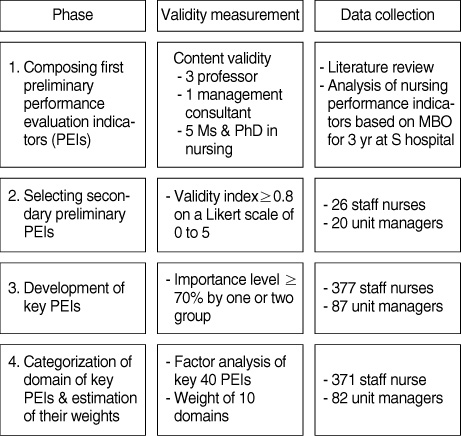
Figure 1
Characteristics of Participants
*participants for importance level measurement of indicators; †participants for estimation of weights of indicators.
ICU=intensive care unit; EMC=emergency medical center.
Ten domains & 40 Performance Evaluation Key Indicators for Hospital Nurses (N=464)
*Final performance evaluation indicators domain; †Number of participants with importance score 4, 5; ‡More than 70% importance rate by managers, less than 70% by general nurses; §Six Sigma simply means a measure of quality that strives for near perfection. And It is a disciplined, data-driven approach and methodology for eliminating defects. ∥Continuous quality improvement.
Factor Analysis for Performance Evaluation Key Indicators
*Six Sigma simply means a measure of quality that strives for near perfection. And It is a disciplined, data-driven approach and methodology for eliminating defects; †Continuous quality improvement.
Eigen Values of Factors
Weight of Factors
A=customer satisfaction; B=patient education; C=direct nursing care; D=profit increase; E=safety management; F=improvement of nursing qualities; G=completeness of nursing records; H=enhancing competence of nurses; I=indirect nursing care; J=cost reduction.
*participants for importance level measurement of indicators; †participants for estimation of weights of indicators. ICU=intensive care unit; EMC=emergency medical center.
*Final performance evaluation indicators domain; †Number of participants with importance score 4, 5; ‡More than 70% importance rate by managers, less than 70% by general nurses; §Six Sigma simply means a measure of quality that strives for near perfection. And It is a disciplined, data-driven approach and methodology for eliminating defects. ∥Continuous quality improvement.
*Six Sigma simply means a measure of quality that strives for near perfection. And It is a disciplined, data-driven approach and methodology for eliminating defects; †Continuous quality improvement.
A=customer satisfaction; B=patient education; C=direct nursing care; D=profit increase; E=safety management; F=improvement of nursing qualities; G=completeness of nursing records; H=enhancing competence of nurses; I=indirect nursing care; J=cost reduction.
 KSNS
KSNS
 E-SUBMISSION
E-SUBMISSION

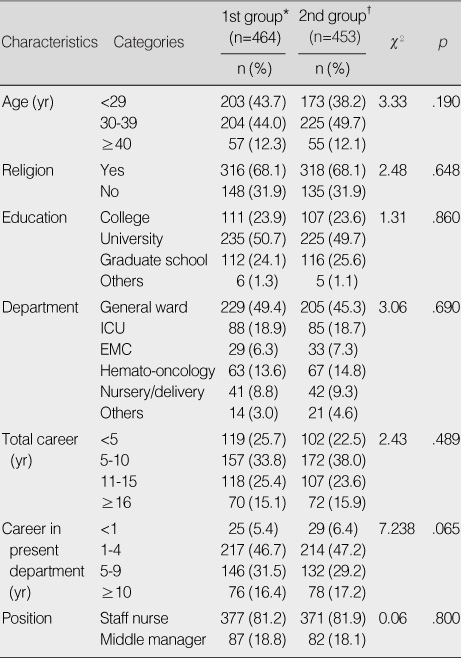
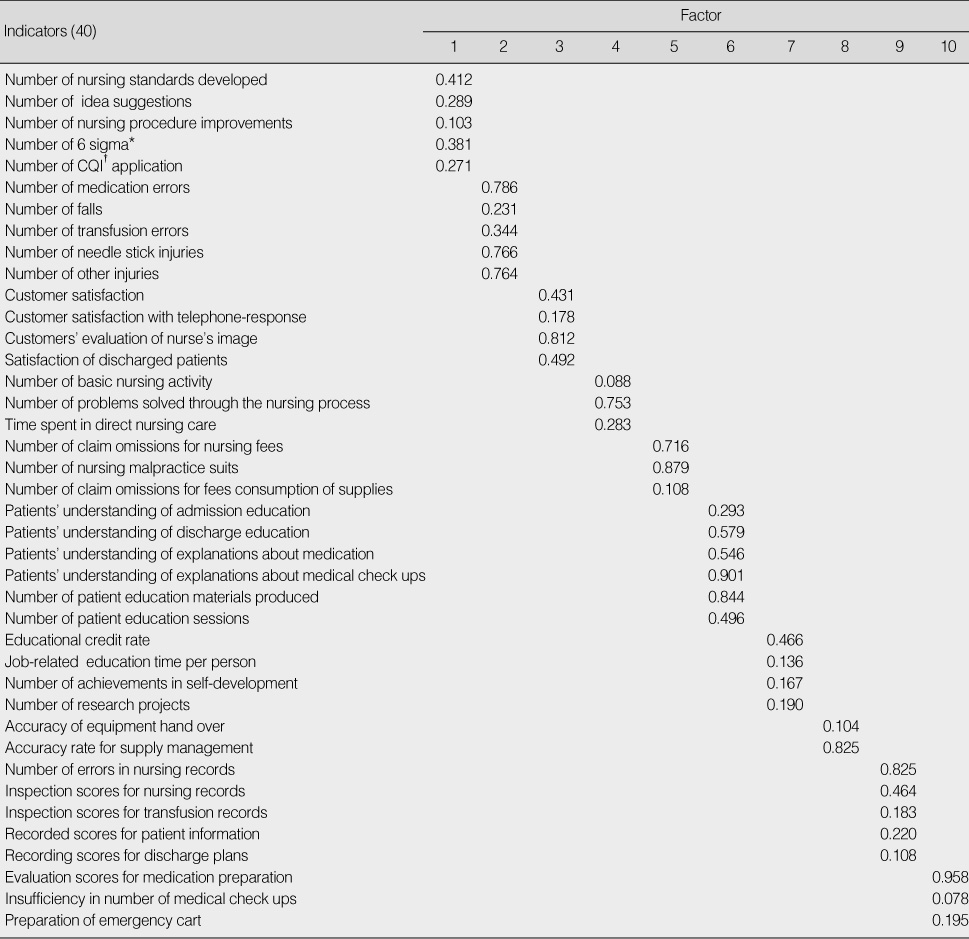
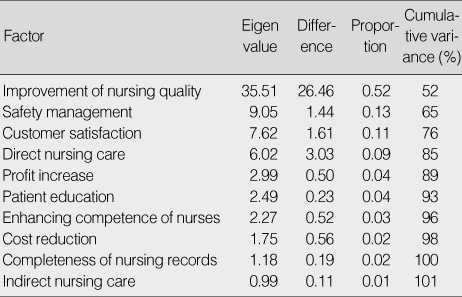

 Cite
Cite

